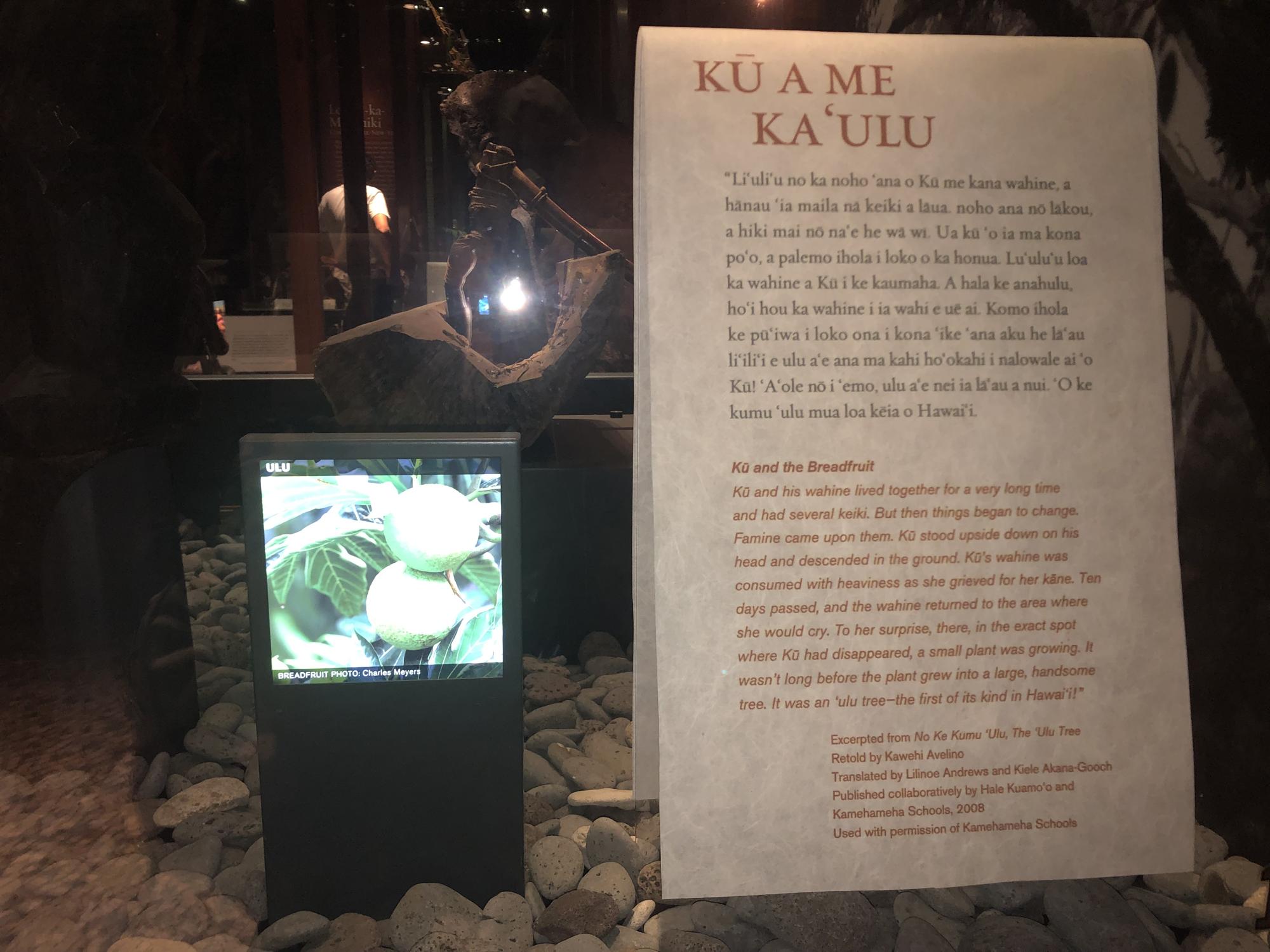
Author
S. Matsuoka
Date taken
Island
Tags
Transcription
Kū A Me Kaúlu: Kū and the Breadfruit. Taken at the Bishop Museum in their Hawaiian Hall. This sign features a Hawaiian explanation of the Hawaiian significance behind the Úlu tree, as well as its English translation (with a few Hawaiian words sprinkled in.)
In this tale, a woman loses her lover and grieves over his resting spot. I'm assuming hehad a green burial (The body is not embalmed, which allows it to decompose naturally with nature. Our bodies are made up of atoms: Hydrogen, carbon, nitrogen, and oxygen.)
Supposedly it was his lover's tears (the water) that cultivated the first Úlu tree in Hawaii into fruition. (I assume we now have many ūlu trees in Hawaii!) How amazing is that?! There are truly miraculous happenings that occur in this world, and this story is one of the ways in which we can keep native life, vintage items, etc. preserved.
In this tale, a woman loses her lover and grieves over his resting spot. I'm assuming hehad a green burial (The body is not embalmed, which allows it to decompose naturally with nature. Our bodies are made up of atoms: Hydrogen, carbon, nitrogen, and oxygen.)
Supposedly it was his lover's tears (the water) that cultivated the first Úlu tree in Hawaii into fruition. (I assume we now have many ūlu trees in Hawaii!) How amazing is that?! There are truly miraculous happenings that occur in this world, and this story is one of the ways in which we can keep native life, vintage items, etc. preserved.
Map